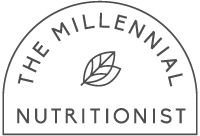What Ingredients to Avoid for Weight Loss | How to Read a Nutrition Facts Label
Written by: Emma Surles BS
Food labels are required on almost every food product. Food labels break down the amount of calories, carbohydrates, fat, protein, fiber, and vitamins that are in that certain food per serving. Understanding food labels can help you understand more about what is in the food, and to make healthier choices.
Photo by ROMAN ODINTSOV
Looking at a food label can help you lose weight. While looking at a food label to determine if this is the right food for you make sure you are calculating the amount of calories you're going to be consuming. Make sure to factor in the serving size. Keep an eye out for elevated fat, cholesterol, and sodium as your daily intake of these should be limited. Make sure you are getting a significant amount of fiber, vitamins, calcium, and iron while eating foods as these are important nutrients for the body. Also, take a look at the grams of protein, carbohydrates, and fat you will consume while eating this serving size. Looking at all of these on a food label can help you keep your intake to the right amount, which can help you stay on track for meeting your daily intake of calorie, protein, carbohydrate, and fat goals.
When looking at food labels these are some ingredients you should avoid.
Trans fat is an ingredient you should stay away from. It is typically added to food to help lengthen the shelf life and prevent the food from spoiling too fast. Trans fat is harmful to our heart and can cause many heart health problems, as well as raise your triglyceride levels.
Partially hydrogenated oils which are another form of trans fats. Hydrogenated oils are known to clog arteries, lead to obesity, and develop heart disease.
High Fructose Corn Syrup (HFCS) is a common ingredient that is added to food. HFCS costs less than natural sweeteners, which is why it is a common food additive. Consuming High Fructose Corn Syrup can increase your cholesterol and triglyceride levels, and can lead to obesity.
Artificial sweeteners ( aspartame, sucralose, and saccharin) although these sweeteners have fewer calories than natural sugars these sweeteners are hard on the body's metabolic system.
Sodium Benzoate and Potassium Benzoate is a preservative that helps extend the shelf life of food items, as well as prevent mold growth. These can cause thyroid levels problems.
Sodium Nitrites and Sodium Nitrates: You can find Sodium Nitrites and Sodium Nitrates in processed meats like deli/sandwich meat, bacon, and hot dogs. You should get these out of your diet because they have been known to cause colon cancer, lead to obesity, and cause heart problems.
Monosodium glutamate (MSG): This is an additive that helps give foods more flavor. If a food contains MSG the food will contain high sodium levels. MSG is found naturally in some foods, but when it is added to a certain food it can be harmful to the body's brain function.
What is on a food label?
Serving size is the amount of food the numbers on the label are for.
Calories per serving tells us how much energy is in that serving size.
Grams of fat, protein, carbohydrates, sugar, sodium, and cholesterol tells us how much is in a serving size. Make your limit foods with high sodium, added sugar, and cholesterol.
Amount of nutrients tells us different vitamins and minerals that are provided in the serving size.
Make sure to read over the ingredients to make sure they are none of the seven listed above.


